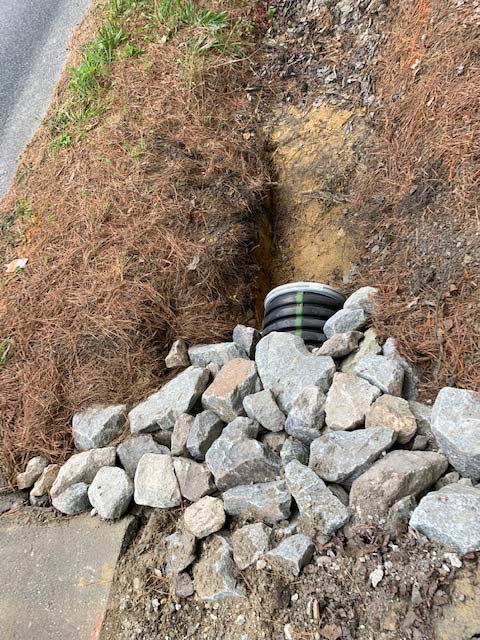Comprehensive Culvert Installation for Effective Water Drainage
Comprehensive Culvert Installation for Effective Water Drainage
Blog Article
Culvert Setup Facilitated: Step-by-Step Overview for Success
From choosing the proper culvert dimension to integrating proper drainage measures, each action in the installation procedure plays an essential duty in the performance and longevity of the culvert system. Keep tuned to uncover the important steps and considerations that can make culvert setup a smooth and effective undertaking.
Choosing the Right Culvert Size
Selecting the ideal culvert dimension is important for ensuring efficient water flow and architectural integrity in culvert installation projects - Pad Construction. The size of the culvert straight impacts the circulation ability of water through the structure. A culvert that is also small can lead to flooding and overflow, while one that is too large might result in lowered water speed, possibly triggering debris buildup and obstructions
To establish the best culvert size, elements such as the watershed area, peak flow rates, and hydraulic efficiency need to be meticulously thought about. Calculations based on these specifications aid in choosing a dimension that can adequately deal with the anticipated water quantity while lessening the threat of clogs and architectural failure.
It is vital to consult engineering guidelines and requirements to make sure that the selected culvert size fulfills the project requirements and local policies (Pad Construction). By choosing the best culvert dimension, task supervisors can maximize water circulation, prevent prospective issues, and enhance the total performance and long life of the culvert installation
Preparing the Installation Site
Effective culvert installation necessitates meticulous preparation of the installation site to guarantee optimal structural assistance and capability. Before beginning the setup process, it is essential to clear the site of any debris, greenery, or obstructions that can hamper the culvert's placement. Ensuring a level foundation is essential for the correct positioning and stability of the culvert. This might entail rating the site to develop a smooth, also surface that can sufficiently sustain the weight of the culvert and any awaited tons. Additionally, correct compaction of the dirt beneath the culvert is essential to stop working out or shifting gradually.
Furthermore, it is necessary to consider elements such as soil make-up, groundwater levels, and ecological impacts when preparing the setup website. Performing a thorough site analysis can aid identify any kind of possible challenges or risks that might affect the culvert's performance. By putting in the time to prepare the installation website correctly, you can help ensure an effective culvert setup that meets architectural needs and makes certain lasting capability.
Positioning the Culvert Appropriately

The quality at which the culvert is positioned is critical for maintaining a proper incline for water circulation. Additionally, the culvert should be oriented correctly to make sure that the inlet and electrical outlet are in the correct locations. Pad Construction.
Backfilling and Compacting the Soil
Correct backfilling and compaction of the soil around the culvert is vital to make certain stability and protect against prospective issues in the future. When the culvert is correctly positioned, the following crucial action is to backfill the area around it with appropriate material. The backfill material need to be without rocks, particles, and raw material to prevent damage to the culvert. It is recommended to utilize granular material such as sand or crushed rock for backfilling, as it provides good drain and compaction homes.
After placing the backfill material, it is essential to portable it in layers of consistent thickness. Using a compactor or a mechanical tamper, compact the soil gently to stay clear of harming the culvert. Compaction helps in lowering the opportunities of negotiation and makes sure uniform support around the culvert. It is crucial to small the soil uniformly on all sides of the culvert to keep its architectural honesty.
Appropriate backfilling and compaction not only give stability to the culvert yet also assist in protecting against soil erosion and maintaining the longevity of the culvert system.
Making Sure Proper Drainage Integration
Integrating reliable drainage services plays a vital duty in the general performance and durability of culvert installations. Proper drain assimilation is crucial for managing water flow, preventing disintegration, and making certain the architectural stability of the culvert system. To achieve this, it is crucial to develop a comprehensive water drainage plan that considers variables such as the volume of water expected, the topography of the area, and the kind of soil existing.

In addition, integrating attributes like disintegration control procedures, such as riprap or vegetation, can further enhance the performance of the water drainage system. By thoroughly preparing and applying these water drainage options, culvert setups can function successfully and withstand the test of time.
Final Thought
To conclude, appropriate culvert installation is vital for preserving efficient water drainage systems. By selecting the ideal culvert size, preparing the installment website, positioning the culvert correctly, backfilling and condensing the soil, and ensuring proper drainage integration, success can be achieved. Complying with these check here steps will help make sure the longevity and performance of the culvert, eventually contributing to the overall success of the drainage system.
Report this page